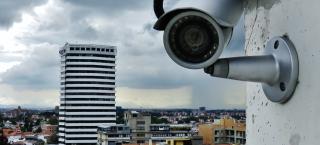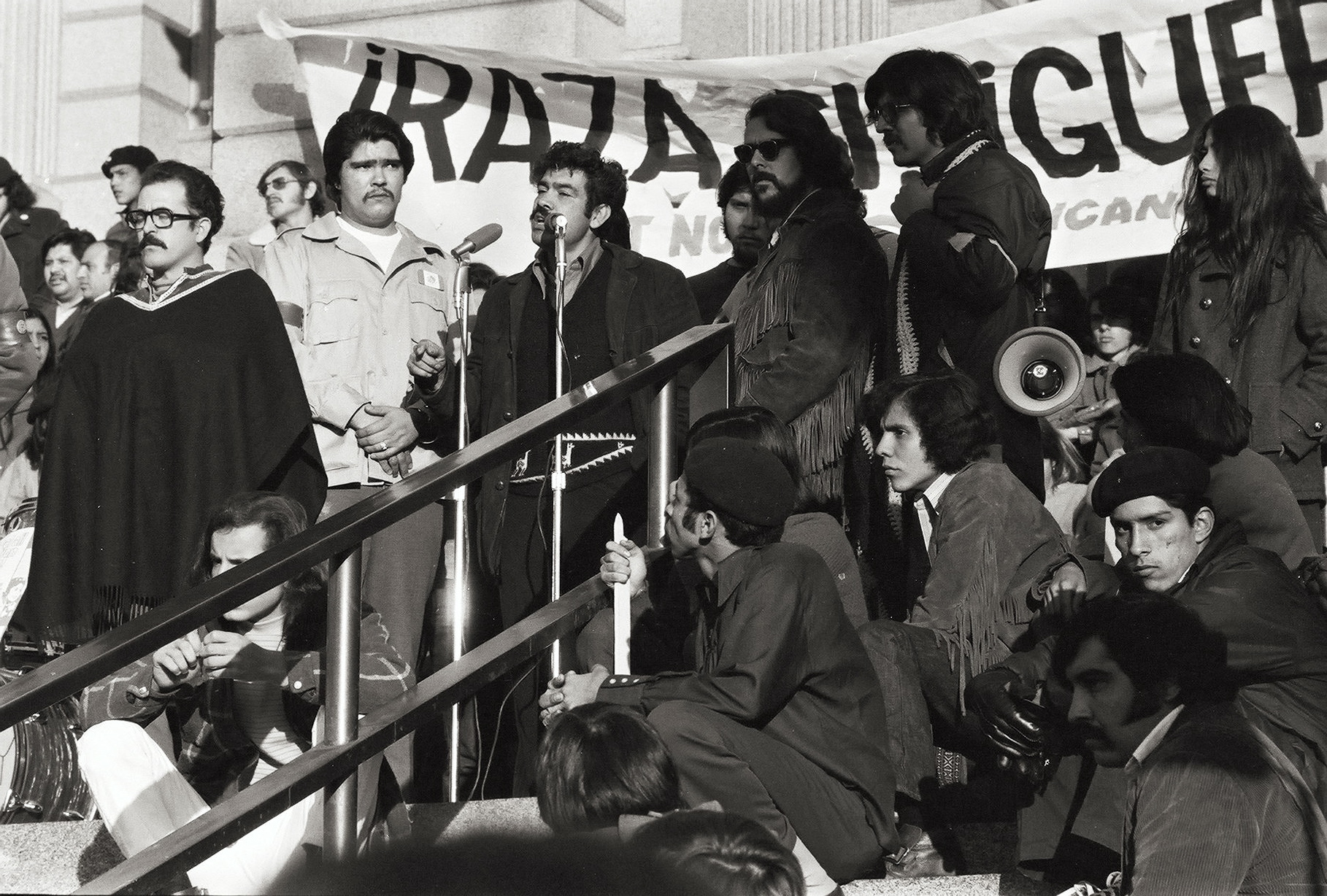
Story
What We Can Learn from the Last Time We Were Scared
In the wake of a crisis, do our most instinctive reactions tend to solve the issues effectively, or pave the way for a parade of unintended consequences? History suggests we should proceed with caution.
On January 9, three days after a riot at the US Capitol by supporters of outgoing President Donald Trump in protest of what they believed was an election-theft-in-progress, New York Congresswoman Alexandria Ocasio-Cortez had a short exchange on Twitter with conservative political scientist Norm Ornstein:
Ocasio-Cortez’s reply to Ornstein, and the position she’s since taken up in a letter with Representatives Rashida Tlaib, Barbara Lee, Ro Khanna, and other progressive House members, is worth noting, mostly because they actually had to hide from the rioters at the Capitol, and not watch it on television or livestream it. Since the events of January 6, you are probably more likely to hear from mainstream American media—especially online media—than from angry Democratic lawmakers, about an emerging, if still undefined or fully understood, wave of domestic terrorism. And more problematically, many of these news outlets are unabashedly leading the charge for a new slate of domestic terror laws they believe the new Biden Administration should carry forward.
Many people have been scared about what happened on January 6 in Washington, DC, and rightly so; it was a surreal and unnerving thing to see unfold. However, even the machinery of the postmodern state has its own logic, and follows its own momentum. Our longer history shows that when our shared institutions—the media, branches of government, law enforcement—start their work from a place of fear, confusion, and misunderstanding, that unabating logic and momentum ends up hurting people in unlimited ways. These were the characteristics of the abuses that came to light in the Church Commission proceedings during the mid ’70s, namely from the FBI’s sprawling counterintelligence program that J. Edgar Hoover had revved up during the Cold War. And once this intelligent machinery gets going, it adapts, leaving behind its own origins and justifications, changing shape and tone in order to represent itself as an ally to popular ideas of the day.
We can in fact look to our own history, right here in Colorado, to see what happens in both the near and short term when government lashes out and reacts in fear. Here are just a couple of examples:
Mission Creep On October 30, 2001—a month and two weeks after the suicide attacks by al-Qaeda in New York, Washington, DC, and Pennsylvania—Colorado Congressman Scott McInnis sent a letter to America's largest environmental organizations, demanding they denounce something called “eco-terrorism.”
“Americans simply cannot tolerate either overtly or through silence,” wrote McInnis, “the use of violence and terror as an instrument of promoting social and political change.” Though McInnis’s letter was sent to groups like Earthjustice and the Sierra Club, the group that he was really targeting was called the Earth Liberation Front, a very loosely organized movement of radicals, drifters, and deep ecology adherents who practiced arson, monkeywrenching, and sabotage in the name of protecting “Mother Earth.”1
The letter was actually the second part of a kind of end run around public opinion and to get mainstream organizations to marginalize the ELF even further. The first had come in October, two weeks after the passage of the USA PATRIOT Act—which was passed by Congress ostensibly to give federal, state, and local law enforcement more tools and expanded power to fight the threat of al-Qaeda—when McInnis and other western states’ members of Congress whose districts had seen ELF actions (including a 1998 arson at a construction site in Vail) convened a hearing on the threat of “eco-terrorism” and the ELF.
President George W. Bush delivers remarks before signing the USA Patriot Act of 2001. Video by White House Communications Agency (Public Domain). Courtesy Wikimedia Commons
But even as the ELF went to sometimes outrageous lengths to avoid hurting anyone—indeed, any living thing—during their actions, the Justice Department assured McInnis and the other lawmakers at these hearings in the fall of 2001 that ELF’s “arson and vandalism [were] dangerous enough to count.”
At this hearing, only a month out from the attacks of 9/11, the Justice Department assured McInnis and other lawmakers that ELF was in fact their “number one priority in the domestic terrorism program.” Bottom line: it only took a few weeks for these expansive new anti-terror laws, passed in the name of fighting one threat, to be jumped on by legislators who were already frightened and angry about political and economic subversion in their proverbial backyards.
And the twenty years since the passage of the PATRIOT Act haven’t been any kinder to its reputation: research has shown that since it was passed in 2001 (and reauthorized by Congress in every year its “sunset provisions” are set to expire) it has been used by law enforcement overwhelmingly to lock up drug offenders, rather than terrorists.
If Wishes Were Horses, Beggars Would Ride One of the biggest mistakes we make when it comes to implementing sweeping new terror-fighting laws is actually believing that the laws will only do what we intend them to do, and will always do it perfectly, and only ever catch the bad guys. Take the “Denver Spy Files,” a cache of documents and records Denver Police began keeping in 1953 on a wide range of people and groups they’d deemed threats. It was the Mile High City’s version of the “Red Squad.”2 One of the key revelations of the Denver Spy Files saga wasn’t only that the police were spying on citizens, but just how many of those citizens were routinely misidentified: radicals and dissidents were lumped in with drug-dealing biker gangs, while “computer snafus” listed political groups as “criminal extremists” or members as “mental cases,” according to a 2003 article in the Chicago Tribune.
And lately, we’ve started to wish “snafus” like these away, with flashy technological advances that are supposed to eliminate doubt in catching the bad guys—say, like sex offenders. Just ask Denver City Council how well that worked, when in early 2020 the grassroots group 5280Not1984, concerned about the use of facial recognition software by local police, ran council members’ faces through Amazon Rekognition software and compared them with faces in the Denver sex offenders registery. According to a Channel 7 News story, the tests “found nine council members had photos that matched with someone in the sex offender registery. In some cases, the software was 92% confident there was a match.”
Not only do techie hacks like facial recognition fail the wish test here in Denver, other forms of intrusive electronic surveillance lined up in the name of fighting terrorism have shown to be worthless in the rest of the country: late last year, a federal judge’s ruling showed that the National Security Agency’s vacuuming up of millions of Americans’ phone data since the early Aughts ultimately gave “zero evidence” that the NSA “stopped a terrorist attack.”
Congresswoman Ocasio-Cortez’s response to Norman Ornstein’s tweet reveals not only her awareness of the overwhelming power of the existing apparatus for combating criminal acts, but also a mindfulness of history, that what occurred on January 6 wasn’t because “there weren’t enough laws, resources, or intelligence.”3 She might’ve added that beefing up police powers rarely works the way we think it will, and when it does, it’s rarely for the reasons it was sold to us for.
There’s one thing Rep. Ocasio-Cortez didn't mention (and to be fair, you only get a couple hundred characters on Twitter)—a big reason for us to be careful about how “we the people” respond to being scared—and that’s what emerges in our culture when we decide that “more truncheons for more cops while they peek through more keyholes” is the solution to our major political and societal issues; something along the lines of the adage that when all you have is a hammer everything begins to look like a nail. This way of thinking suddenly makes the public sphere a forbidding, even threatening, place to be. Because there’s now “something in the air,” and that it’s “all part of the discourse,” we’re seized with a righteous fervor to do our part, to ferret out potentially dangerous thinking—deviancy, controversy, even the very American right to be completely, absolutely wrong about something—and punish it.

Chicano movement activist and Crusade for Justice founder Rodolfo "Corky" Gonzales speaking at an anti-Vietnam War rally on the steps of the Colorado state capitol building in Denver, Colorado, around 1971-1973.
Colorado has seen its fair share of this too, from Industrial Workers of the World organizers in the early twentieth century being hauled off to the city jail because they were giving soapbox speeches about workers’ rights on Broadway, to Denver communists in the 1950s being sent to federal prison for pamphleteering, to Corky Gonzales being hounded by the police in the 1960s, and in the last few years, University of Colorado Boulder college professors being chased out of town because they had politics the rest of us don’t like. As Glenn Greenwald writes, over and over again, frightened people find ways to “tell themselves that those they’re attacking are so evil, are terrorists, that anything done against them is noble and benevolent.”
This last point, over and above issues of efficacy and best practices and policy, might really be what to think about when we consider what’s frightening us now and what we want to do about it. Yes, we’re scared. As we prepare ourselves and one another to answer that fear, we need to ask—who is it that we’re going to be, this time?
Notes:
1Two excellent resources on the Earth Liberation Front, who they were and what they believed—not to mention a good primer on how US law enforcement investigates what it perceives to be domestic terror threats—may be found here and here.
2“Red Squad” is a byword for a team of police detectives who get assigned to investigate, infiltrate, and break up left-wing dissident groups. Crime novelist (and Denver resident!) James Ellroy has written extensively about them in his “Underworld USA” trilogy; a compact and more a bit more scholarly definition of what a red squad is and examples of how it historically functioned in other places may be found here.
3And that record’s pretty clear: a 2017 series by the Intercept on the FBI, “The FBI's Secret Rules,” revealed that loopholes and open-ended mandates created in the last twenty years allow for the government to spy on journalists, give carte blanche to use racial and religious profiling, and more or less provide the feds power to spy on Americans any time they’d like, for any reason at all.
More from The Colorado Magazine
A Well-Elevated Militia When we asked Denver’s Rainbow Militia to show us what democracy looks like, they responded with dance, poetry, and song. You’re going to want to see this.
"Be True to What You Said on Paper" the disCOurse is a place for people to share their lived experiences and their perspectives on the past with an eye toward informing our present. Here, a medical sociologist and social scientist argue that to truly arrive at equity in America will require a sincere reckoning with founding mythologies of white superiority.
Lifting Up History in a Historic Year The 2020 Miles and Bancroft Awards
